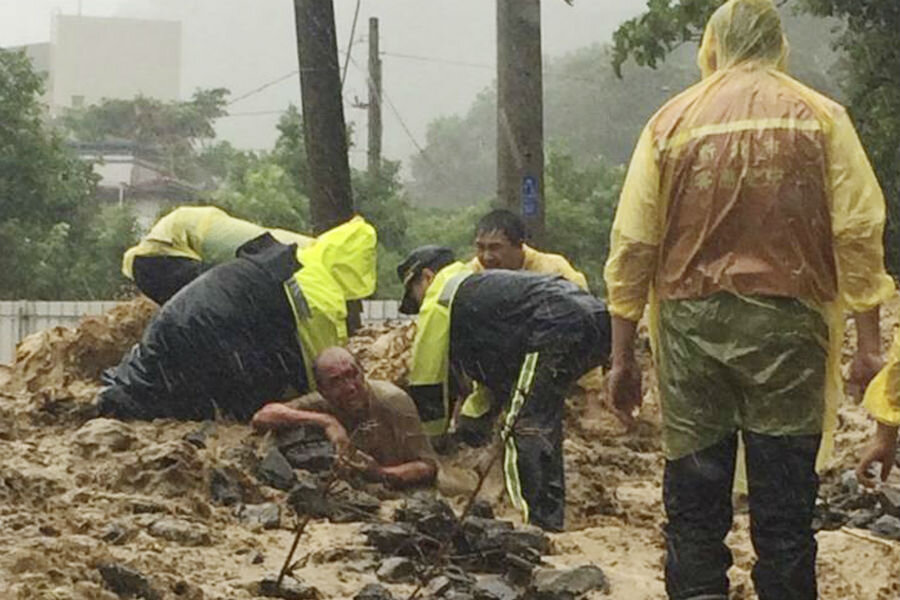Typhoon Soudelor hits Taiwan, moves toward China: Were they prepared?
Loading...
Soudelor, a typhoon registered as the strongest of 2015 as it blew across the western Pacific earlier this week, made landfall in Taiwan early on Saturday, and moved into the Taiwan Strait and toward mainland China later in the day.
Fujian Province in east China issued its highest typhoon alert as Soudelor approached, lashing southeast China's coastal provinces with heavy rains and gale-force wind, knocking out at least one power grid, and leaving more than a million people without power before the storm made landfall.
The center of the storm hit eastern Taiwan at 4:40 a.m. local time Saturday, causing electricity outages that affected more than 3 million, and leaving six people dead, four missing, and more than 100 injured, according to the Associated Press. Authorities had deployed more than 30,000 military personnel to help relocate residents of vulnerable areas as the typhoon made its way across the Pacific toward the island nation.
Authorities in southeast China evacuated about 163,000 people, mostly fishermen, and ordered around 32,000 ships back to port ahead of the typhoon, China's official Xinhua News Agency reported. More than 7,000 soldiers and police were on standby, authorities said.
China is no stranger to natural disasters, and has developed a broad network of resources to be able to respond quickly and effectively.
In absolute numbers, China and the United States recorded the most disasters in the world in the decade leading up to 2013, which a recent report funded by the United Nations and USAID attributed to the countries' size and high population densities. China in particular is vulnerable to earthquakes, typhoons, and pandemics because of its population density and location.
Following lessons learned from the SARS epidemic, which infected more than 5,000 in the early 2000s, Beijing overhauled its disaster preparedness plans, reports The Overseas Development Institute, a UK-based think tank that researches humanitarian issues.
Response teams were decentralized, and China began establishing emergency management offices at multiple levels of government. The Red Cross also coordinates its disaster response teams primarily on the community level in Asia, working with locals to set up disaster committees, teach first aid, and reduce life-threatening risks.
China also leverages technology to deal with disasters, reports ODI. The Natural Disaster Reduction Center of China (NDRCC) includes a highly advanced operations room where natural disasters are monitored using imagery from three orbiting satellites and unmanned drones operated by private contractors. Maps and satellite imagery created by the NDRCC is made available to countries around the world through a partnership with the United Nations.
Soudelor, named by the Federated States of Micronesia after a Pohnpeian word for legendary chief or ruler, is the thirteenth typhoon to hit China this year.








